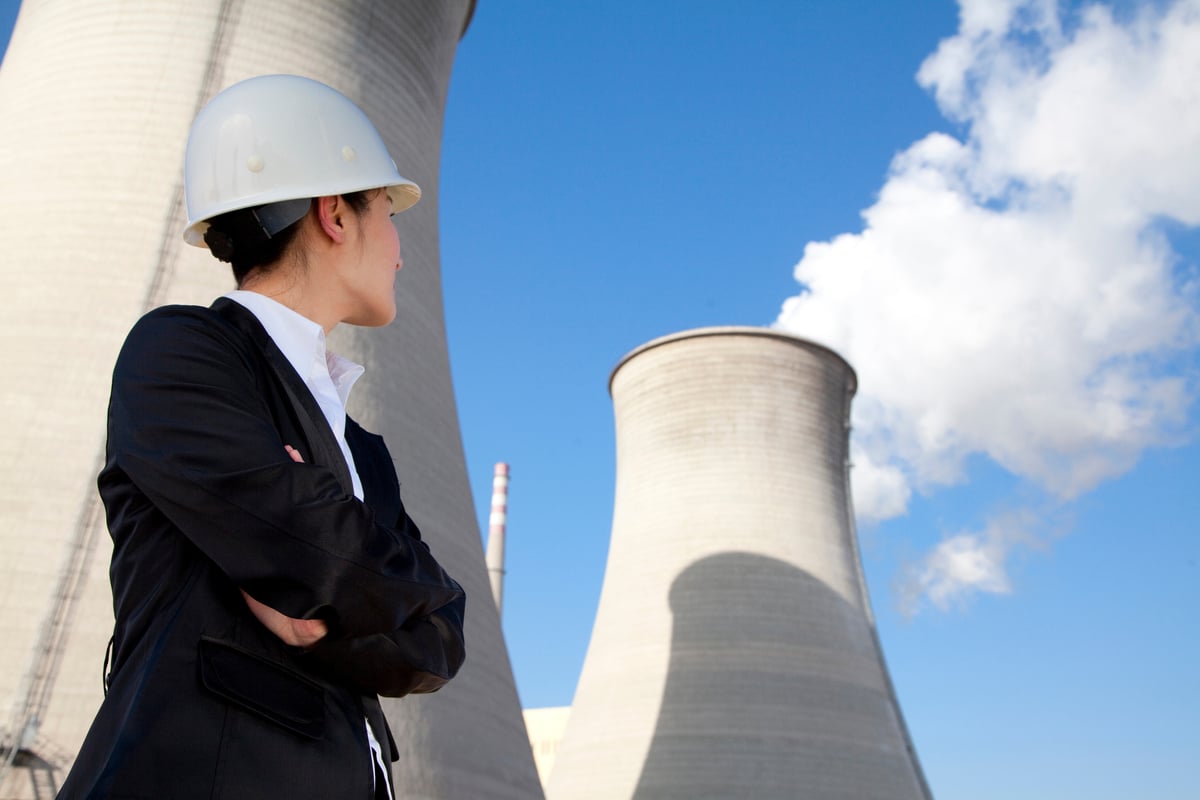
Image source: Craig Butz via Wikimedia Commons.
A few years ago, there was a lot of enthusiasm about a new kind of solar energy installation that would be able to provide solar energy 24 hours a day. The concept was the solar thermal power plant -- which uses mirrors to focus the sun's energy on a power tower, where it heats a liquid (usually an oil) that eventually turns a turbine to create electricity. If solar thermal power plants worked well, they could be connected to an energy storage medium, like molten salt, allowing that heat to be held in reserve temporarily and doled out produce electricity to the grid 24/7.
A few massive plants were commissioned, including a $2.2 billion, 440 MW Ivanpah Solar Power Facility in the California desert. A $1.6 billion loan guarantee was given to the project by the federal government, and in late 2013 the power plant started generating energy. But the results haven't been quite as impressive as its developers planned.
Solar thermal and the performance problem
Ivanpah's problems began shortly after it came online. The plant only generated about a quarter of its expected power output in its first eight months of operation as owners NRG Energy (NRG 0.03%), Alphabet (GOOG +0.73%), and BrightSource Energy worked to optimize operations.
Problems early on weren't surprising because the solar thermal power tower is a fairly new technology. But we're now over two years into operations, and the plant still isn't meeting its contracted production terms with utility PG&E. Last week, regulators gave the plant another year to increase production, rather than forcing it into default on its contract, but that may not be enough.
Consumer advocates are already pushing for the utility to renegotiate terms with the power plant, which signed its power purchase agreement when solar plants were much more expensive. The plant was paid $0.20 per kWh last summer for electricity and $0.135 for the rest of the year, compared to an average solar system getting about $0.05 per kWh for new contracts today.
If the plant can't crank up its production numbers by a year from now, PG&E may be able to negotiate a better deal, which could conceivably end up with the plant forced to shut down if the new lower rate doesn't cover its operating costs.
Not yet beating the incumbents
Solar thermal technology was once seen as a high potential technology because it could supply energy more consistently over time than a traditional solar plant. The way the power tower heats fluid, and the potential for molten salt or another medium to store energy, made it look more feasible as a base-load technology. But it has proven the be more expensive than more mainstream technologies, and when you include the distraction thousands of mirrors pose to air travel and the thousands of birds that have been fried by the concentrated light, it isn't living up to plan. But this isn't the first time solar technologies haven't lived up to expectations.
Technologies like thin-film CIGS (think Solyndra) and amorphous silicon solar cells were supposed to lead to lower-cost solar panels and lower cost solar, but never panned out. Instead, most of the solar panels being deployed today are using silicon technology developed decades ago. The industry is proving that tried-and-true technologies with years of historical performance to lean on are better than concepts that haven't been proven on a big scale. Ironically, that means that old, stodgy companies like Trina Solar and SunPower, who have proven the ability to make solar panels cost effectively, are better investments than the next new tech coming to the market.
The disappointing production from Ivanpah, combined with other failed solar technologies, shows why investors should look more for known technologies than new technologies to disrupt the industry. Because the history of these promising breakthroughs leaving holes in investors' pockets is a bad one.







